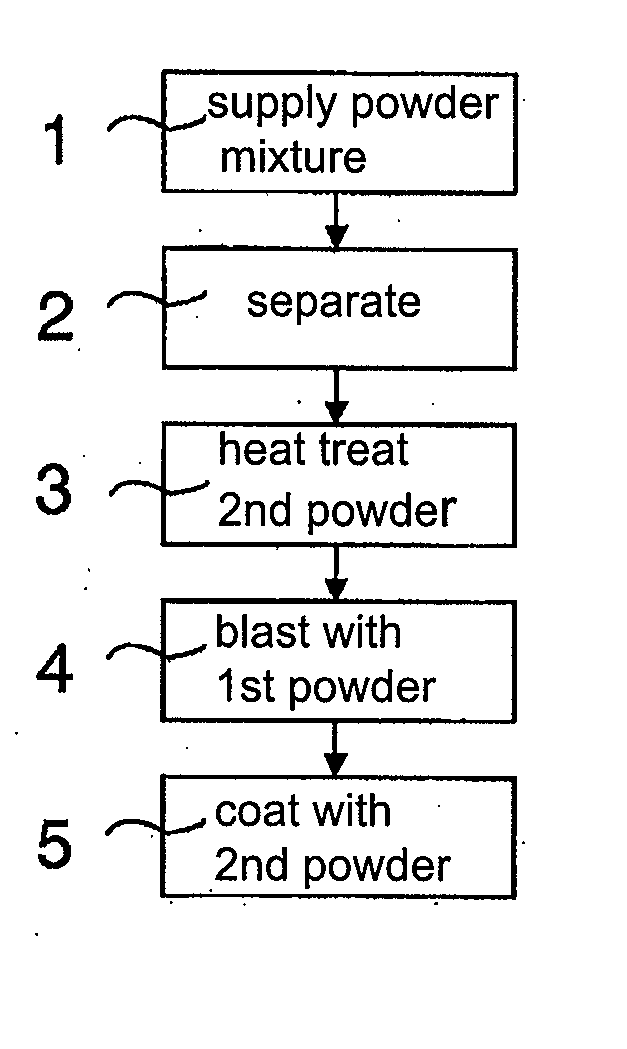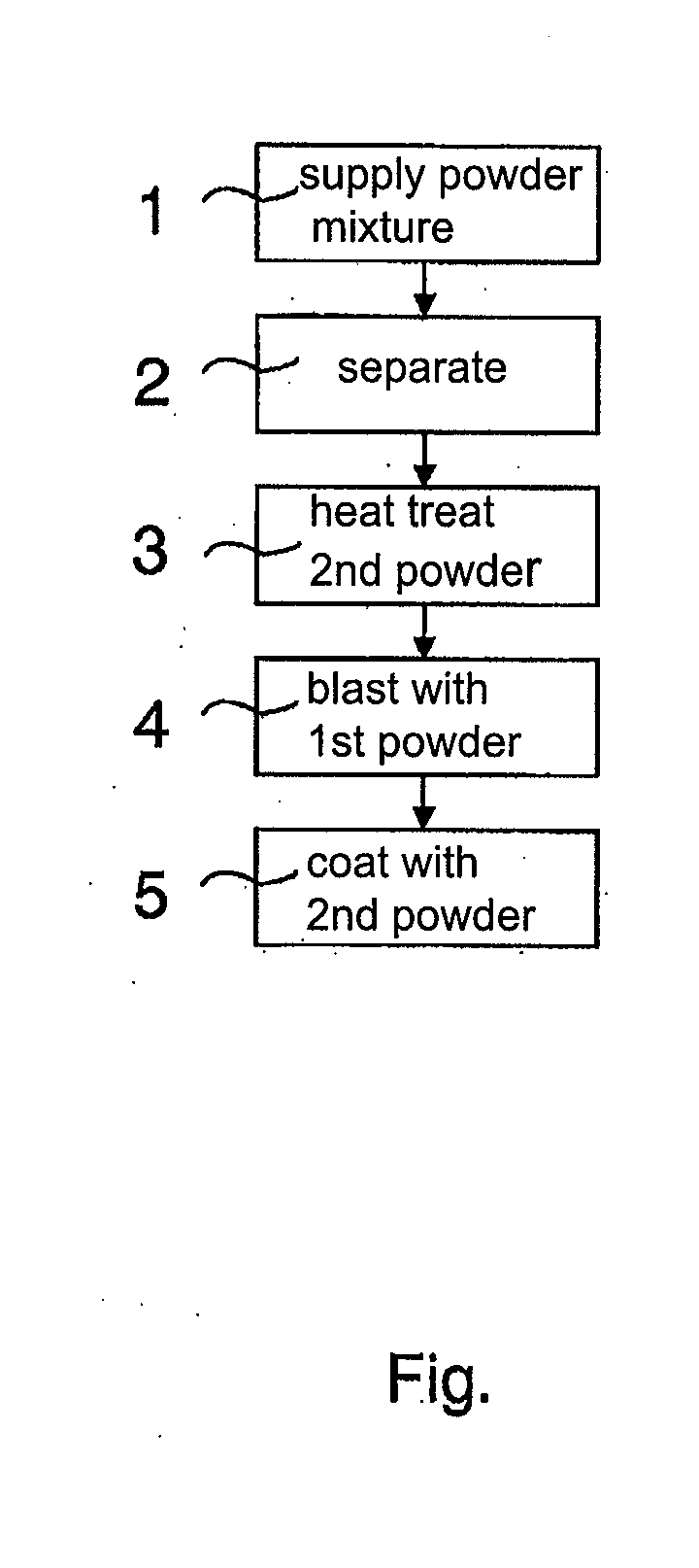Method for processing a surface of a component
a technology for components and surfaces, applied in the direction of coatings, sustainable transportation, plasma techniques, etc., can solve the problem of weakening of the bonding of the coating to the componen
- Summary
- Abstract
- Description
- Claims
- Application Information
AI Technical Summary
Benefits of technology
Problems solved by technology
Method used
Image
Examples
Embodiment Construction
[0018]In a first step 1, a powder mixture supplied. The powder mixture naturally has particles of different sizes.
[0019]This powder mixture is then separated with the aid of screening in another step 2, for example, into a first powder having a first particle size, for example, larger than 40 μm, and a second powder having a second particle size, for example, between 5 μm and 60 μm.
[0020]Hereupon (step 3), the second powder may be heat-treated by stress free annealing, soft annealing or solution annealing, for example.
[0021]In another step 4 following or in parallel with step 3, a component, in particular a component of an aircraft engine, for example, a blade, is blasted using the first powder. This may take place with the aid of HVOF spraying or cold gas spraying of the first powder. Suitable spray equipment is used for this purpose, for example, an HVOF burner or a cold gas gun. This roughens, i.e., activates, the surface of the component.
[0022]In step 5, the component is coated ...
PUM
| Property | Measurement | Unit |
|---|---|---|
| particle size | aaaaa | aaaaa |
| particle size | aaaaa | aaaaa |
| particle size | aaaaa | aaaaa |
Abstract
Description
Claims
Application Information
 Login to View More
Login to View More - R&D
- Intellectual Property
- Life Sciences
- Materials
- Tech Scout
- Unparalleled Data Quality
- Higher Quality Content
- 60% Fewer Hallucinations
Browse by: Latest US Patents, China's latest patents, Technical Efficacy Thesaurus, Application Domain, Technology Topic, Popular Technical Reports.
© 2025 PatSnap. All rights reserved.Legal|Privacy policy|Modern Slavery Act Transparency Statement|Sitemap|About US| Contact US: help@patsnap.com


